Sensor installation
For Soil Moisture Measurement and Irrigation Scheduling
How many Sensors per Management Unit?
Generally the more soil moisture sensors are installed per management unit, the more solidly based is the information provided. In other words, a good measurement needs several replications. On the other hand effort and cost for taking measurements must remain reasonable.
It prooved as good compromise to install three measurement points à two sensors per irrination unit. Each of these three measurement points should have one sensor in the main root-zone, and one sensor below the main rooting horizon. Therefore for irrigation management in total six soil moisture sensors per management unit are necessary. The irrigation decision is based on the average of the sensor values installed in one soil horizon.
Runaway values are excluded from the average, in case one sensor or a pair of sensors should show constantly runaway values, the location of this measurement point should be changed.
Larger irrigation plots are usually divided into several irrigation blocks, which are irrigated one after the other. Provided soil of the whole plot is uniform, and the crop is of the same age and cultivar, it is possible to choose just one irrigation block for measurement, and transfer results from this block to the other irrigation blocks. This way sensor cost can be kept low.
Where to install the Sensors?
The measurement points should be representative for the whole field. Therefore the field-edges are not suitable for sensor installation. Soil conditions at the measurement point should be identical to the predominant soil conditions of the whole plot. Further the neighbouring plants should represent an average plant on this field. Too strong or too weak plants are not suitable.
The three measurement points should be placed randomly over the field, cover different rows with varying distance to the water inlet. For optimal results all sensors should be placed directly in the wetting bulb (under or 5cm besides a dripper), since in this position soil moisture is most uniform in soils.

Wrong / Correct
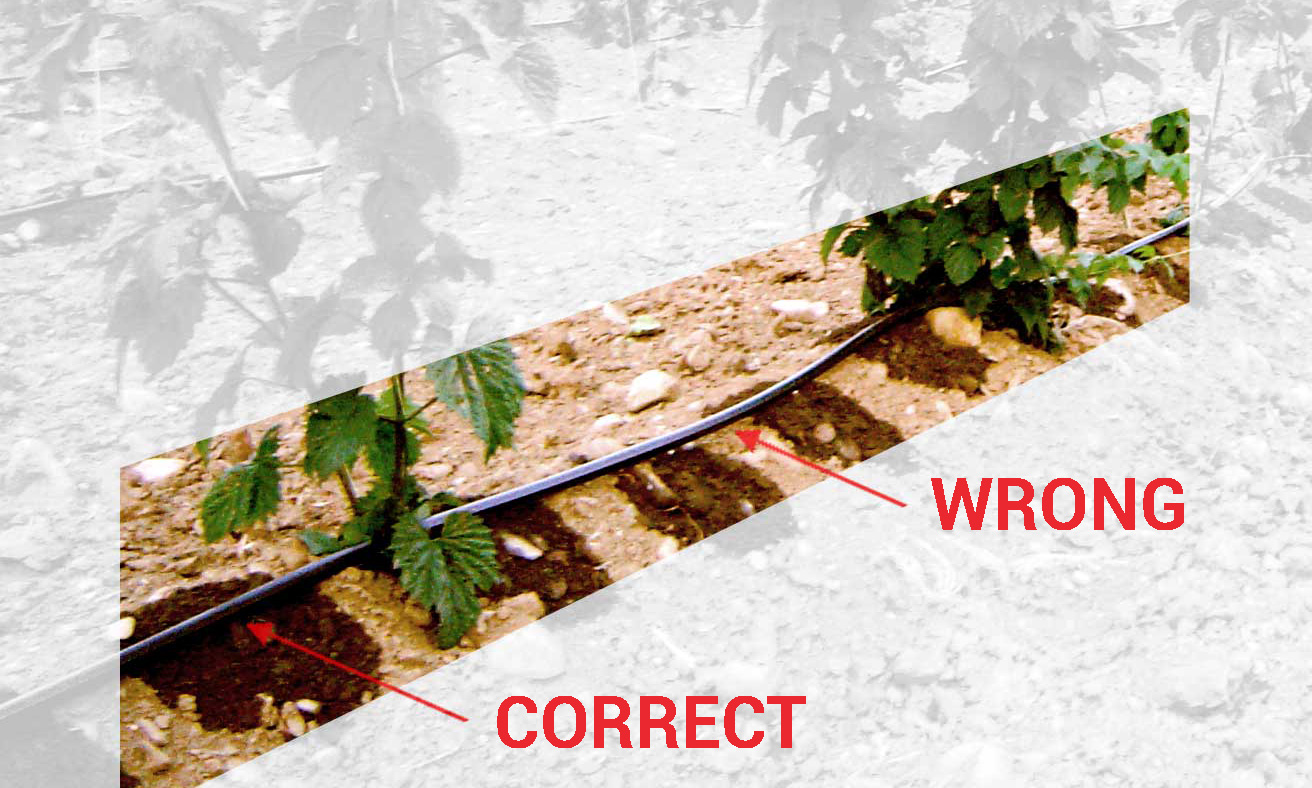
Sensor installation
Soil moisture sensors are installed in moist but not wet soil. Normally sensors remain for the whole growing period at this site. Tensiometers must be retrieved before the frost period, and stored dry over winter, while Watermark Sensors and volumetric probes may remain year-round in soil.
For installation fist auger a hole with diameter 22 to 25mm to the desired measurement depth. For installation tool, please see chapter accessories / installation tool & Purkhauer.
For a slurry installation, (common with Tensiometers and Watermark Sensors) some soil material is mixed with water for a thick slurry. Next a small portion of this slurry is poured in the augered hole, and then the sensor is carefully pushed down to the desired measurement depth, so that good soil contact is created with the sensor.
ECH2O Sensors are installed generally dry, without slurry. Either a trench is dug, and the sensors are pushed on edge into the trench-wall, or a hole is augered, and the sensor is pushed vertically into ground. For deeper measurements, an installation tube may be necessary.
However, for all sensor models it is of central importance, that good and thorough contact between sensor surface and surrounding soil is created during installation.
When should Measurements be taken?
Soil moisture sensors without datalogger should be read-out every day at approximately the same time of day. After an irrigation event it takes some time, until water is evenly distributed in soil. Therefore sensors should be checked also several hours after the end of the water application, to control how deep down water did penetrate the soil.
Points to observe:
Measurement with Tensiometer
When using a Tensiometer, the length of the Tensiometershaft (cm) must be substracted from the measurement value (hPa / mbar) to obtain the true value..
Measurement with Watermark sensor
Watermark Sensors show soil moisture potential in kPa / Centibar. 1 Centibar equals 10 hPa or 10 mbar. Since Watermark Sensors are slightly sensitive on changing soil temperatures, the original Irrometer read-out devices automatically compensate for this. For details please refer to the product manual of the respective read-out device.
Measurement with Volumetric Sensors - TDR/FDR
When working with volumetric sensors, it is important to take the soil type into account. As soon as soil type and it's properties are known, volumetric sensors deliver a very accurate result of water content. Some devices show even the water deficit in mm. For details please refer to the product manual of the respective read-out device.
Interpretation of Measurement Values
Sensors in main root zone:
The sensor in the main root-zone shows when to start irrigation. This sensor should fluctuate in the crop specific optimum range. The optimum range is determined either by specific soil water potential values, example between 80 and 300 hPa (Tensiometer, Watermark) or by specific percentages of water content, example between 20 and 26% water content. Please note: The upper sensor may show directly after a water application values wetter than the optimum range. This is OK, as long as the lower sensor shows no reaction on this water application.
Sensors under the main root zone:
The sensor under the main root-zone shows how long to irrigate, or how much water should be applied per individual gift.
In a well managed irrigation system, this sensor should not react on individual water applications. Normally this sensor should show over time an almost straight line close to field capacity.
In case this sensor shows a destinct reaction on an individual water application, the water application was too high, and water (and dissolved nutrients) is deep percolated below the main root-zone.
In case this sensor shows increasingly dry conditions over time, the individual water applications are too small.
In any case soil should not be wetted at all measurement depths over 100% field capacity for a prolonged time (equals below 80 hPa soil water potential). Otherwise water logging, waste of pumping energy and nutrient loss will be the result.
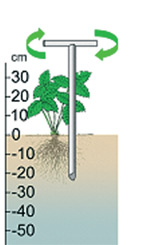
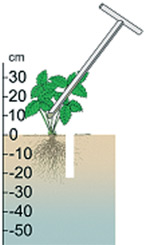
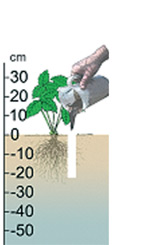
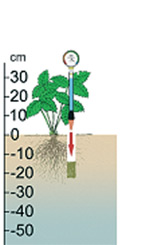
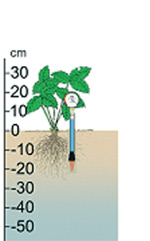
Advantages of datalogging
Soil moisture measurement data and information on water applications should be filed permanentely in any case. This should be done, regardless wether data are hand-written or electronic. By comparison of actual data with historic data it is possible to fine-tune irrigation over time, and thus eventually reach the optimal irrigation schedule.
A well managed irrigation increases crop yield, optimizes product quality and reduces cost of production. At the same time natural rescources are protected and conserved.
 EN
EN  DE
DE  IT
IT  FR
FR  ES
ES 